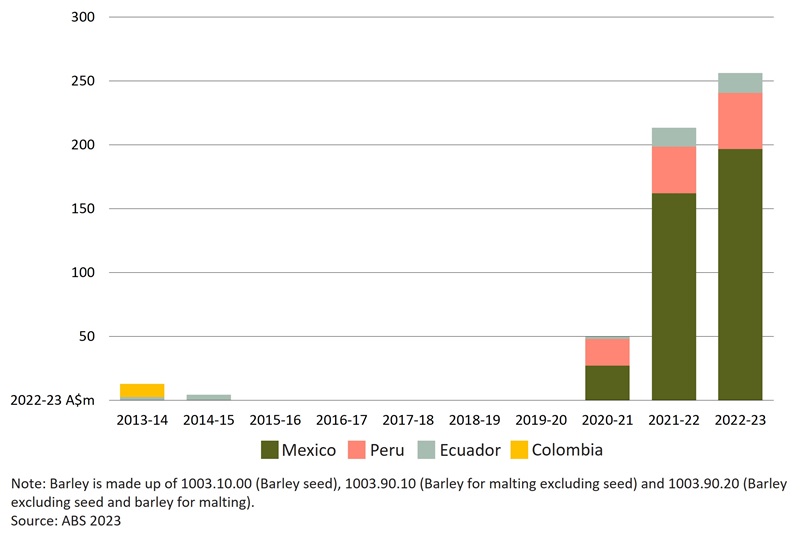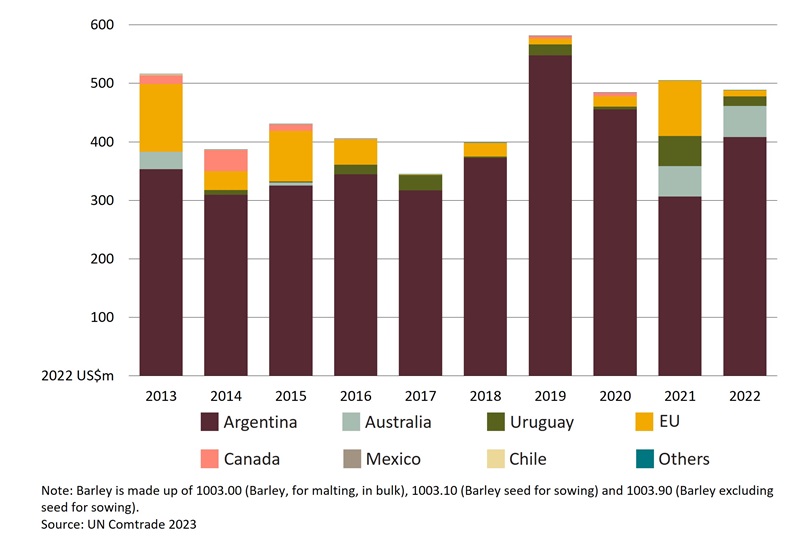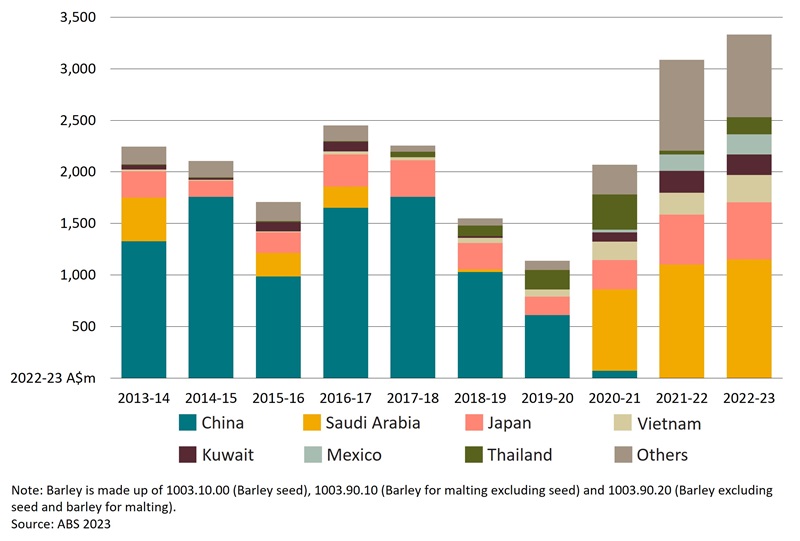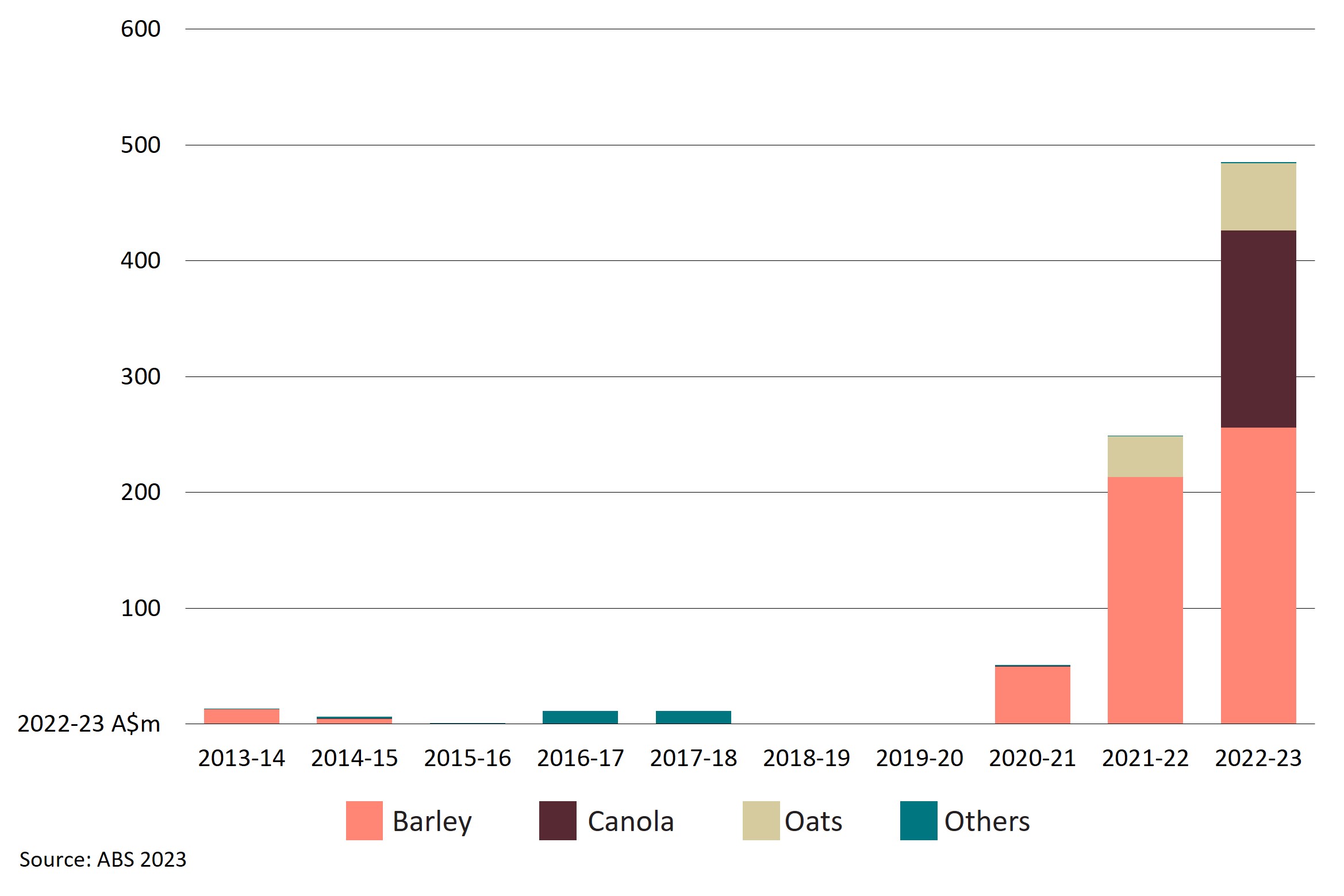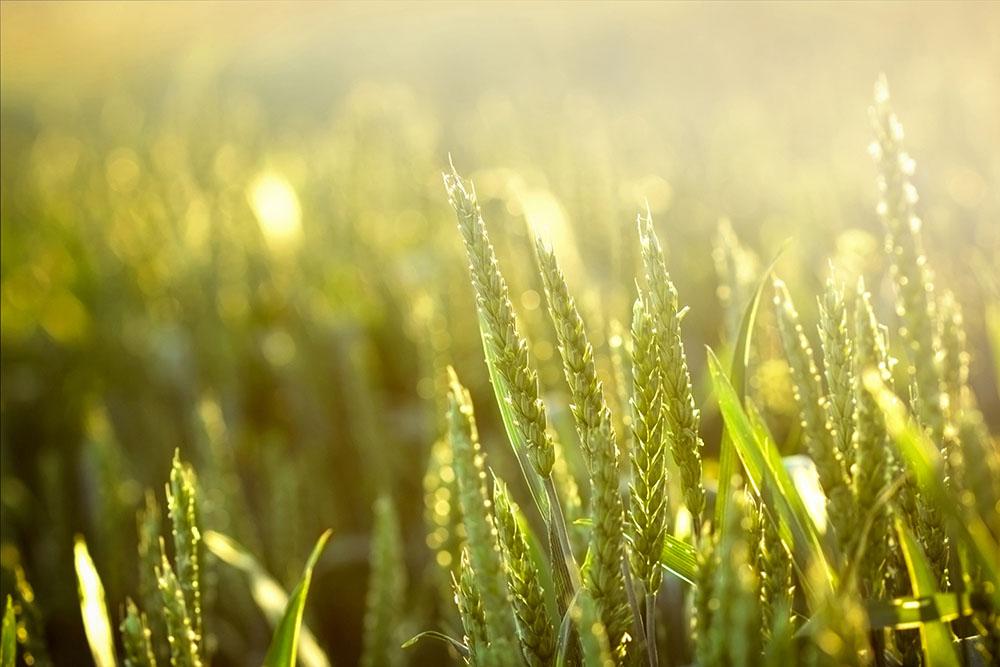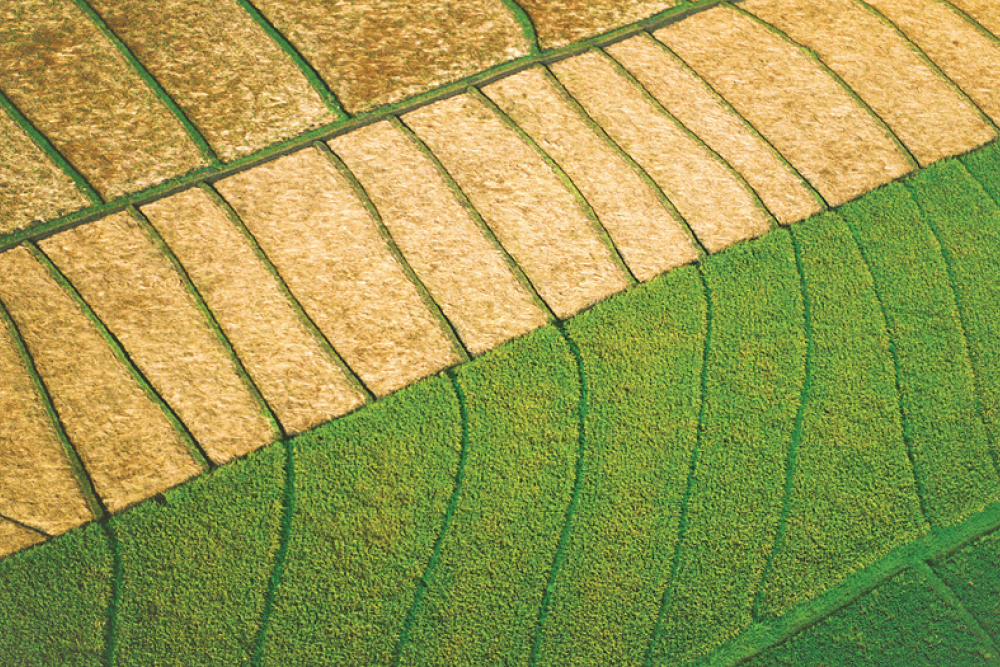Australia’s barley and malt have made significant gains in Latin American markets over the past four years, driven by investments by industry and the Australian Government. This includes funding through the Australian Government’s Agricultural Trade and Market Access Cooperation (ATMAC) Program to diversify agricultural exports, and active facilitation and engagement by Australia’s Agricultural Counsellors in Mexico City and Santiago.
The grain industry is committed to growing its presence in Latin American markets. The Australian Export Grains Innovation Centre (AEGIC) recently visited Brazil, Chile, Peru, and Mexico to meet with current and potential customers of Australian malting barley and malt. AEGIC, with the support of the department, hosted three separate technical forums in Mexico and Brazil on Australian malting barley. The forums and industry meetings added value to the webinars previously held during the COVID-19 hiatus period. These webinars provided Latin American customers with updated information on the Australian barley industry and the quality characteristics and benefits of Australian malting barley varieties.
These initiatives are key to engage industry representatives including brewers, maltsters, traders, and industry associations. This work establishes Australia as a reliable supplier of high-quality malting barley and malt in Latin America.
In addition to barley, canola and oats are also making significant gains in Latin American markets, particularly Mexico. The value of canola exports to Mexico – which has an established and growing oilseed crushing industry – is expected to continue to grow in the near term.
Australian barley exports to Latin America
Over the past three years, the value of Australian barley exports to Latin America grew by +416% in real terms to reach A$256.1 million in 2022–23 (ABS 2023). This was due to Australia’s record production of quality barley and redirection of barley exports from the Chinese market. Within Latin America, demand was influenced by suboptimal growing conditions, with drought and late frosts reducing regional production.
Australian barley export to Latin America markets is dominated by malting barley and malt. In 2022–23, Australia’s total barley exports to Latin America (A$256.1m) consisted primarily of malting barley ($246.5m), with the remainder as barley for feed. Barley for feed is outcompeted by soy and corn in Latin American markets. Australia also exported A$67.0 million worth of malt to the region.
In 2022–23, Mexico accounted for 77% of the value of Australian barley exported to Latin America (Figure 1). Mexico has become the world’s fourth largest beer producer and the world’s largest beer exporter following the outstanding growth of its beer industry over the last decade.
Figure 1 – Value of Australia’s barley exports to Latin America, 2013–14 to 2022–23
Barley imports by Latin American countries
In recent years, Australia has emerged as the primary supplier of barley to Mexico, Peru and Ecuador. Australia accounted for 95% of the value of Mexico’s barley imports in 2022, which were worth a total of US$145.1 million. France and the US made up the remaining 5% market share. In 2022, Peru and Ecuador imported US$42.0 million and US$14.6 million worth of barley, respectively, with Australia providing 94% and 92% of their imports by value (UN Comtrade 2023).
Other Latin American countries – principally Brazil – continue to source their barley from within the region. In 2022, Argentina accounted for 84% of the Latin America’s US$488.3 million of barley imports (Figure 2). Other suppliers were Australia (11%), Uruguay (3%), and the EU (2%).
Figure 2 – Value of Latin American’s barley imports from the world, 2013 to 2022
There is potential scope for Australian exports to grow in the region if access to the Brazilian market for malting barley can be achieved. Brazil is the largest barley importer in the region with US$267 million imported in 2022 (UN Comtrade 2023) and is the world’s third largest brewing industry after the US and China, ahead of Mexico. The country has been expanding its malting capacity to meet increased demand and reduce its dependence on malt imports, worth US$730 million in 2022.
Argentina and Uruguay are the main suppliers of barley to the Brazilian market (UN Comtrade 2023). In 2022, Brazil imported 1.9 million tonnes of barley and malt. In the same year, Australia only exported 2,000 tonnes of malt to Brazil. Looking at other recent years, Brazil has been a substantial market for Australian malt; between 2019 and 2023, Brazil imported a total of 162,000 tonnes of malt from Australia.
Australian barley varieties have a reputation of high yielding malting quality attributes. This has resulted in high demand for Australian malting barley, even though Australia’s average unit price is higher than from other suppliers. In the Peruvian and Ecuadorian markets, where Australia is currently the main supplier, the average unit import price for Australian barley (excluding seed for sowing) is higher than Argentina, the main competitor.
Australia’s barley trade and production
Australia's overall barley exports dipped in 2020 after China's imposition of tariffs. Following this, Australian exporters redirected barley to other markets, especially in the Middle East, Southeast Asia, and Latin America (Figure 3). The value of barley exports increased, reaching A$3.3 billion in 2022–23, following high grain production. Australian grain production in 2022– 23 was the third consecutive highest on record, with exceptional yields and high-quality malting barley produced.
Figure 3 – Value of Australia’s barley exports to the world, 2013–14 to 2022–23
Exporters have pivoted, selling malting barley into the feed market due to limited market availability for malting. Between 2020–21 and 2022–23, exports of Australian barley for feed were worth an annual average of A$2.5 billion, in real terms. Australia’s main markets were Saudi Arabia (39%) and Japan (16%) (ABS 2023). Exports of barley for malting in the same period were worth an average of A$324.5 million in real terms. The key markets for malting barley were Mexico (36%), Vietnam (18%), Japan (10%), and Peru (10%). The average unit price for Australia’s barley for malting was A$418.3 per tonne compared to A$372.7 per tonne for barley for feed (ABS 2023).
Other growing Australian grain exports to Latin America
Australia has also seen a significant increase in other grain and oilseed exports to Latin America, supported by exceptional Australian grain production. In 2022–23, canola and oats were Australia’s second and third largest grain and oilseed exports to Latin America after barley (Figure 4). Barley accounted for 53% of Australia’s A$485.0 million of grain and oilseed exports to the region in that period. This was followed by canola (35%) and oats (12%).
Australia’s canola exports to the region, worth A$170.1 million in 2022–23, went to Mexico’s growing oilseed crushing industry, with small amounts to Argentina and Brazil (ABS 2023). After China, Mexico is the second largest market for Australia oats and accounted for 100% of the value of Australia oats exported to Latin America (A$58.1m) in 2022–23 (ABS 2023).
Figure 4 – Australia’s grains & oilseed exports value to Latin America, 2013–14 to 2022–23
Trade agreements in Latin America
The Comprehensive and Progressive Agreement for Trans-Pacific Partnership (CPTPP) including Australia, Chile, Mexico and Peru, is a plurilateral trade agreement that provides a 0% tariff on barley for member countries. Australia also has bilateral trade agreements with Peru and Chile that provide preferential tariffs for barley. Outside of trade agreements, Peru and Chile have a most-favoured-tariff (MFN) rate of 6% on barley (not for sowing). Mexico’s MFN rate is already set at 0% for all trading partners. Further details on Australia’s free trade agreements are available from the FTA Portal.
The key competitor for exporting grains in Latin America is Argentina, followed by Uruguay. In addition to having a proximity advantage over Australia, Argentina is a member of the Southern Common Market (known as MERCOSUR), which also includes Brazil, Paraguay, and Uruguay. Both Argentina and Uruguay have preferential access under a 0% import tariff for barley (and malt) into Brazil. The current MERCOSUR common external tariff for barley coming from countries outside the bloc sits at 10% (and 14% for malt). Similarly, Australia can also be expected to face additional competition from Argentina should export taxes on grains be lifted.
Resources
More information on Australia’s broadacre, grain, pulse and oilseed are available from Grains Australia, Grain Producers Australia and Grain Growers Limited.
More information on Australia’s grains is available from the Grains Research & Development Corporation (GRDC).
The Australian Government’s network of Agriculture Counsellors provided information for this article. More information about the Agriculture Counsellor network, including contact details, are available on the Department of Agriculture, Fisheries and Forestry website.
Go further, faster with Austrade
Thinking about expanding into Latin America? Austrade’s Go Global Toolkit can help find the right market for products, identify sales partners, and understand export rules and tariffs.

